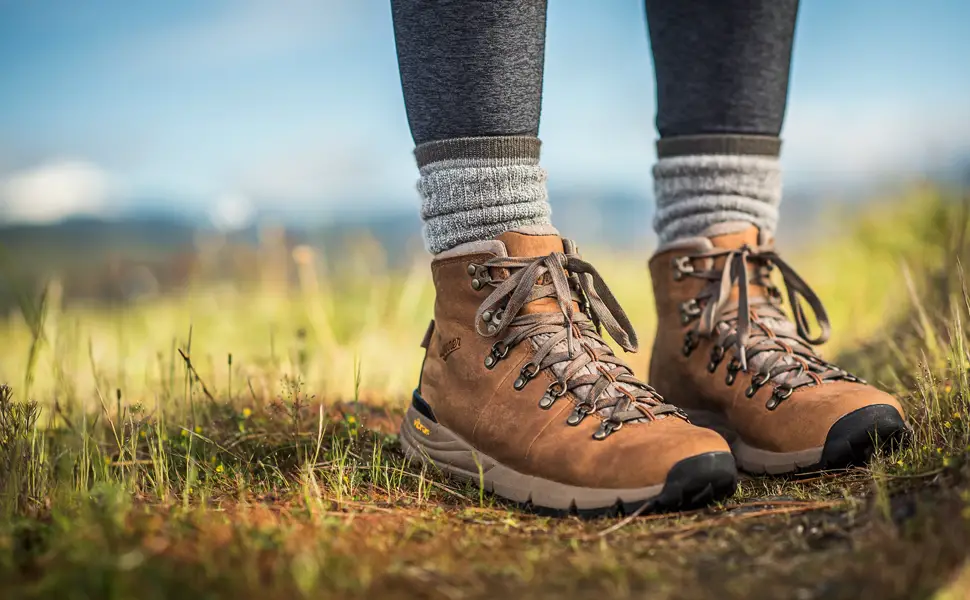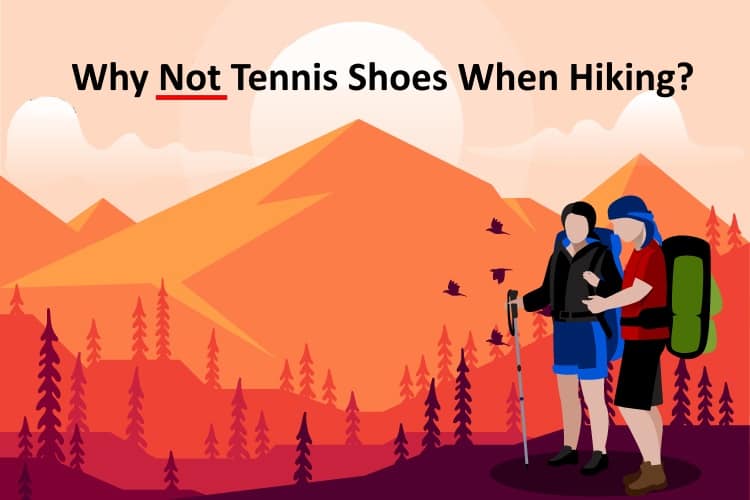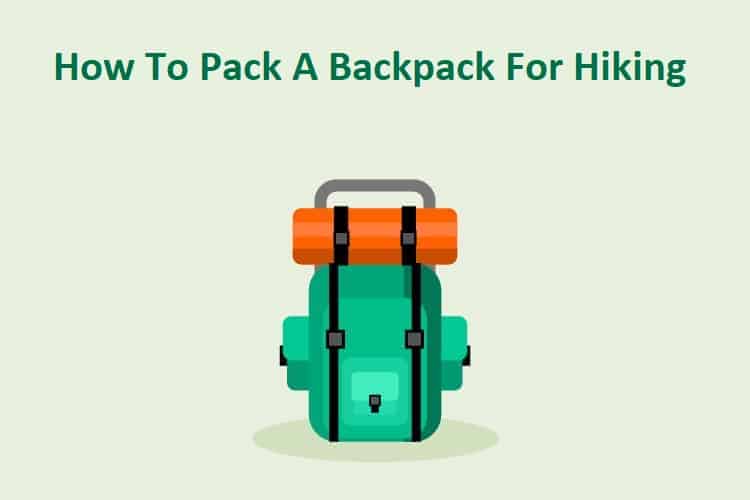It is important to understand the key differences between hiking shoes vs boots in order to make an informed decision when selecting the best gear for your next outdoor adventure.
Hiking boots are designed to provide extra ankle support, a more protective upper, and a rugged outsole. The heel and sole of a boot are usually thicker and offer superior grip in difficult terrain such as mud, snow, and rocky paths.
In contrast, hiking shoes are lighter than boots and offer more breathability and flexibility. They have a more low-profile design that allows for greater mobility, as well as a lower heel-to-toe drop, which is beneficial for those planning to cover long distances.
Additionally, hiking shoes often feature a more aggressive tread for better gripping ability than regular running shoes. Ultimately, the right choice for you depends on the type of terrain and environment you will be hiking in, as well as your individual needs and preferences.
Benefits Of Using Hiking Shoes
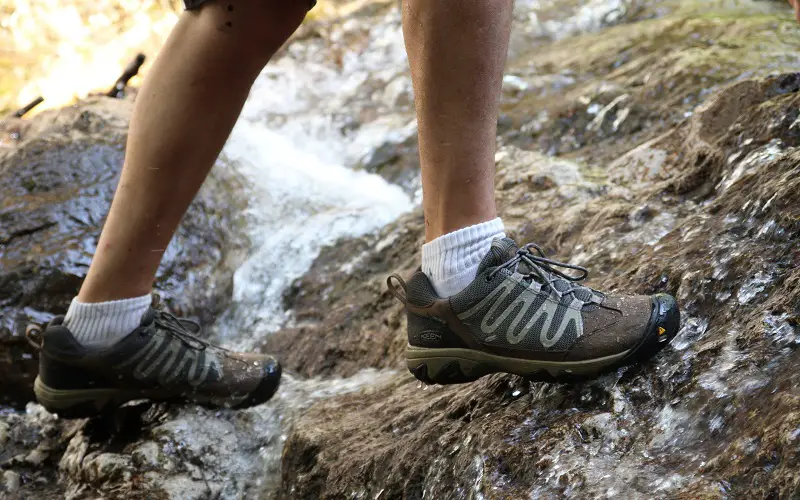
Hiking shoes offer a number of benefits for those venturing outdoors. They provide excellent traction and grip on challenging terrain, are more lightweight than boots, and offer breathability that helps keep your feet cool.
Hiking shoes also provide a lower heel-to-toe drop, which is beneficial for long-distance hikers and those traveling over flat terrain. Furthermore, they are often more flexible than boots, allowing for greater mobility in tight spaces and on rocky pathways.
For all of these reasons, hiking shoes are often the preferred choice for hikers with specific terrain requirements or who are looking for a lightweight, breathable, and flexible option.
Pros
- Hiking shoes are lightweight and breathable, providing flexibility and mobility in tight spaces and rocky terrain. They have superior grip and traction, ensuring stability and control.
- They’re more affordable than boots, making them ideal for budget-conscious hikers. Quick-drying materials make them perfect for wet and muddy conditions.
Cons
- Hiking shoes are not as durable as boots, meaning they may need to be replaced after fewer miles.
- They also do not offer enough protection for difficult terrain, and the lighter material makes them less suitable for carrying heavier loads. Additionally, they are not as waterproof as boots, and offer less support and stability.
Benefits Of Using Hiking Boots
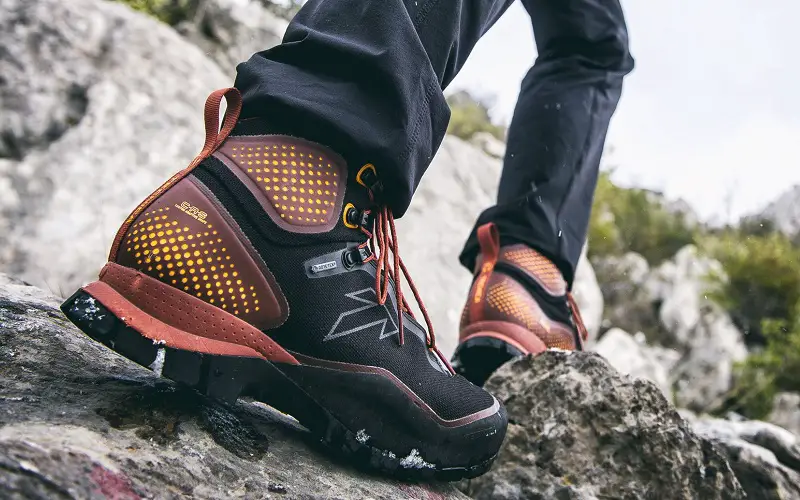
Hiking boots are the go-to option for hikers looking for superior ankle support, protection and durability.
Their thicker heel and sole provide a superior level of grip in terrains such as mud, snow, and rocky pathways, while also offering more protection from sharp objects or uneven surfaces.
Furthermore, the higher profile design of boots offers more support and stability to the foot, making them ideal for heavier loads or more difficult terrain.
Additionally, their aggressive tread pattern offers superior grip for those on the move. Overall, hiking boots are a great choice for anyone who needs a more protective, supportive, and rugged shoe for their outdoor adventure.
Pros
- Hiking boots offer superior ankle support and protection, stability, an aggressive tread pattern for grip, and a higher profile for heavy loads or rough terrain.
- They’re better for challenging conditions, with thicker soles for traction and protection. Plus, they’re a long-term investment due to their durability.
Cons
- Hiking boots can be heavier and less breathable than shoes, making them less suitable for warmer climates. They are also more expensive than shoes, making them less budget-friendly for some hikers.
- They are also less flexible than shoes, making them less suitable for tight spaces and rocky terrain. Additionally, they require more time to break in, meaning they will be less comfortable at the start of the hike.
Weight And Durability Comparison
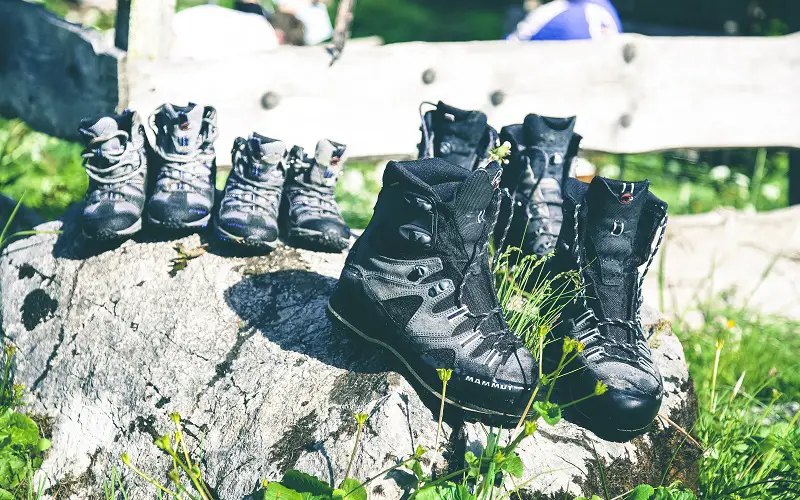
Hiking boots are heavier than hiking shoes, but this extra weight is offset by the additional protection, support, and grip they provide.
They are also more durable and last longer over time, making them a great investment for regular hikers. Despite their heavier weight, hiking boots are usually designed with cushioning and shock absorption features that make them more comfortable to walk in.
They are usually constructed with thicker and tougher leathers and materials that can stand up better to abrasion and wear and tear.
A well-made pair of hiking boots can last for many years with proper maintenance and care, whereas a pair of hiking shoes may require replacing after a few outings.
Hiking boots also provide greater stability, so they are less likely to slip or move around on rough terrain, which makes them a safer option for longer hikes.
Winner: Hiking Boots
The Importance of Hiking Socks
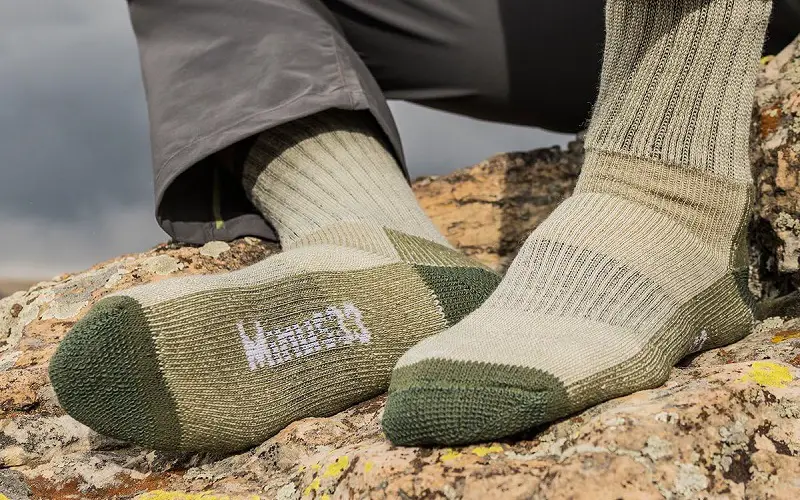
It is important to have hiking socks for both hiking shoes and boots, as they provide extra cushioning, help reduce friction, and keep your feet dry and comfortable.
Hiking socks are designed with a blend of fabrics, such as wool and synthetic materials, for breathability and moisture-wicking.
They also provide additional insulation to protect against the elements. In addition, they can help keep your feet secure in your shoes or boots, reducing the risk of blisters.
Ultimately, you should be sure to select a pair of socks suitable for your specific needs and the type of terrain you will be tackling.
Hiking Shoes vs Boots: Which One Is The Best?
Deciding between hiking shoes vs boots depends on the environment you will be hiking in, as well as your individual needs and preferences.
If you are looking for a lightweight, breathable, and flexible option that offers excellent traction and grip, then hiking shoes are the way to go.
Alternatively, if you require more protection, support, and superior grip for difficult terrain, then hiking boots are the obvious choice.
References:


